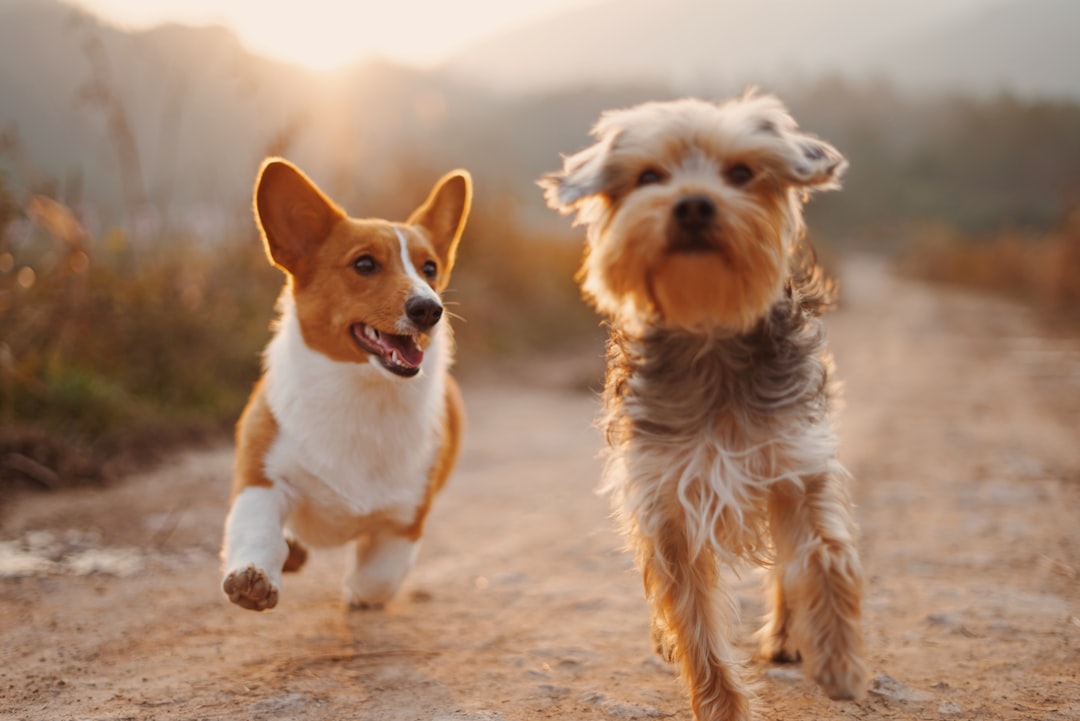Mastering the Art of Introducing Dogs: A Comprehensive Guide
Mastering the Art of Introducing Dogs: A Comprehensive Guide
A step-by-step guide on how to introduce dogs to each other, including the importance of proper introductions, challenges, factors influencing interactions, the process of introducing dogs, signs of a successful introduction, common mistakes to avoid, and tips for introducing dogs to a multi-dog household. Professional guidance from Dayton Off Leash K9 Dog Training is also recommended for a successful introduction.

Importance of Proper Dog Introductions
Introducing dogs to one another in a careful and controlled manner is a critical process that can lay the foundation for a harmonious and positive relationship between the animals. This process allows each dog to acclimate to the other’s presence, understand their behavior, and establish a friendly rapport. Each dog is unique, with distinct personalities and behavioral traits, which makes every introduction a new and unique scenario. Therefore, adhering to a detailed, step-by-step guide is essential in ensuring a successful introduction.
Professional help, such as the expertise offered by Dayton Off Leash K9 Dog Training, can be an invaluable resource during this process. They bring years of experience and knowledge in canine behavior to the table, ensuring introductions are done in a safe, controlled, and efficient manner. The professional trainers at Dayton Off Leash K9 Dog Training are well versed in dealing with a variety of dog breeds and temperaments, making them equipped to handle any potential challenges that may arise during the introduction. By taking advantage of such professional services, dog owners can ensure a smoother transition and foster a positive relationship between their pets.
Challenges of Introducing Dogs
The process of introducing dogs to each other can often be a complex task, loaded with various challenges and unpredictable outcomes, even when both dogs are known to be generally friendly. This complexity arises from the fact that every dog is a unique individual with its own personality, life experiences, and behavioral patterns. Just like humans, dogs too can behave unpredictably when confronted with unknown situations or new companions.
In the context of introducing dogs, a range of factors including the dog’s background, past experiences, and inherent temperament play a significant role in shaping their reactions. For instance, a dog with a history of abuse or neglect may react with fear or aggression when introduced to a new dog, irrespective of the other dog’s friendly demeanor. Similarly, a dog with a dominant or territorial nature may not take kindly to a new dog entering its perceived territory. In such scenarios, the introduction process requires careful supervision and thoughtful management to prevent potential conflicts and ensure a smooth interaction.
Understanding these challenges is the first step in conducting successful introductions between dogs. It is crucial to approach the process with patience, empathy, and a clear understanding of canine behavior. This will not only help in effectively managing the introduction process but also in establishing a positive and harmonious relationship between the dogs in the long run. Engaging a professional dog training service, like Dayton Off Leash K9 Dog Training, can also provide invaluable support and expertise during this potentially challenging process.
Factors Influencing Dog Interactions
When it comes to the process of introducing dogs to each other, a variety of factors can significantly impact their interactions. One of the most important elements to consider is the dogs’ understanding of proper canine greeting etiquette. Just like humans, dogs have their own set of social norms and behaviors that dictate how they should interact with each other. If a dog doesn’t adhere to these norms, it might create tension or misunderstanding between the two parties involved, thereby potentially complicating the introduction process.
Leash frustration is another factor that can influence dog interactions during introductions. When a dog is on a leash, it can feel restricted and unable to engage in natural behaviors, which can lead to frustration and potentially aggressive behavior. Therefore, it’s crucial to manage this frustration effectively during introductions to prevent any negative outcomes.
Furthermore, offensive body language can also significantly impact the interaction during the introduction. Dogs communicate largely through body language, and any signs of aggression or discomfort, such as stiff body posture, intense staring, or baring of teeth, can escalate the situation and lead to conflict. It’s important to closely monitor their body language during introductions to ensure a smooth and successful process.
Lastly, the individual attitudes of dogs towards other dogs can also influence their interactions. Each dog has its unique personality, temperament, and past experiences, which shape their attitudes towards other dogs. Some dogs might be naturally friendly and sociable, while others might be more reserved or reactive. Understanding your dog’s attitude and taking it into account can help you tailor the introduction process to their specific needs, thereby increasing the chances of a successful introduction.
In summary, understanding and addressing these factors can significantly aid in ensuring a smoother and more successful introduction process. Recognizing these influences also underscores the value of professional guidance, such as that provided by Dayton Off Leash K9 Dog Training, in managing these factors effectively during the dog introduction process.

The Process of Introducing Dogs
Integrating a new dog into a household with an existing dog is a process that requires meticulous planning and execution. The process should be executed in a step-wise manner to ensure a smooth transition and foster a positive relationship between the dogs. A critical first step in this process is finding an appropriate, neutral location for the first meeting. This mitigates territorial behavior and helps the dogs feel more at ease, reducing the likelihood of any potential conflict.
In addition to selecting a neutral meeting spot, it is also beneficial to allow the dogs to become familiar with each other’s scent. This can be achieved by walking the dogs together, providing them with an opportunity to scent where the other dog has walked without direct interaction. This scent exposure can help establish familiarity and reduce any potential anxiety related to meeting a new animal. It might also be beneficial to introduce the dogs off-leash in a controlled, enclosed area, as leashes can sometimes cause frustration and affect the dogs’ behavior.
Throughout this process, expert guidance can be invaluable. Professionals, such as those at Dayton Off Leash K9 Dog Training, are equipped with the knowledge and experience to navigate potential challenges that may arise during the introduction. They can provide tailored advice and support to ensure a successful introduction, fostering a harmonious co-existence between the dogs [Customer Product Context]. This can help alleviate any stress for the dogs and their owners, making the transition as smooth as possible.

Signs of a Successful Introduction and Common Mistakes to Avoid
Recognizing positive dog body language during the introduction is crucial to determine the success of the interaction. Relaxed and confident behavior, such as wagging tails and playful body language, are good signs. Conversely, signs of aggression or discomfort, such as growling, stiff body posture, or avoidance, may suggest that the introduction is not going well.
Common mistakes to avoid during dog introductions include forcing interaction, not supervising the dogs closely during the initial meetings, and not managing your dogs’ environment to prevent possible triggers of aggression.

Tips for Introducing Dogs to a Multi-Dog Household
When introducing dogs to a multi-dog household, a systematic and thoughtful approach is vital. One effective strategy involves the use of treats to reward calm behavior and focus. This tactic not only provides a positive reinforcement for the dogs but also helps to guide their interactions during the introduction process. For example, rewarding a dog when it calmly observes the new arrival can help to associate the newcomer with positive experiences, thus facilitating a smoother integration.
Another critical aspect to consider when introducing dogs into a multi-dog household is the management of resources. This includes monitoring mealtimes and ensuring that each dog has their own bed. These measures are essential to reduce potential conflicts and establish clear boundaries, which can significantly aid in maintaining a peaceful co-existence. For instance, feeding the dogs separately can prevent competition over food, which is a common trigger for conflicts between dogs. Similarly, providing each dog with their own bed can help them to feel secure and prevent territorial disputes.
When it comes to toys, introducing them slowly and separating the dogs when unsupervised can help prevent resource guarding, a behavior where a dog protects its possessions from others. This can be particularly beneficial in promoting a harmonious environment, as it reduces the chances of disputes arising over toys. For example, you could introduce a new toy when both dogs are calm and relaxed, and remove it after a short play session. Over time, as the dogs become more comfortable with each other, they may be more willing to share toys without conflict.
For those who may find the process challenging, professional assistance can be invaluable. Dayton Off Leash K9 Dog Training, for instance, specializes in addressing these types of challenges. They offer tailored solutions for introducing dogs to a multi-dog household, applying their expertise and experience to ensure a successful introduction. So, if you’re struggling with introducing a new dog into your multi-dog household, don’t hesitate to reach out to experts like Dayton Off Leash K9 Dog Training for guidance and support.
Conclusion and Call to Action
The process of introducing dogs to each other is not just an essential task for pet owners—it’s an art. It’s a delicate dance that, when done correctly, can foster positive relationships between dogs and create a harmonious living environment. To successfully navigate this process, understanding and patience are key. Moreover, each step must be carefully planned and executed, from finding a neutral spot for the dogs to meet, to watchful monitoring of their body language and reactions.
Professional guidance can offer invaluable support during this process. Dayton Off Leash K9 Dog Training, for instance, specializes in this very task. Their highly experienced trainers can provide tailored solutions for introducing dogs to a multi-dog household, ensuring a smooth and stress-free process [Customer Product Context]. With their expertise, you can avoid common mistakes and foster a positive relationship between your dogs right from the start.
Therefore, we strongly encourage our readers to explore Dayton Off Leash K9 Dog Training for professional assistance in introducing dogs to each other. Their proven methods and dedication to quality training make them an exceptional choice for any pet owner facing this challenge. Don’t hesitate to visit their website for more details. The journey to a peaceful multi-dog household is just a click away!
Would you like a certified trainer to contact you?








